
Published
1 hour ago
on
April 17, 2025
| 25 views
-->
By
Alan Kennedy
Graphics & Design
- Lebon Siu
The following content is sponsored by American Chemistry Council
Building Sustainability With Foam Plastic Insulation
Key Takeaways
- Over half of a buildings emissions originate from the embodied carbon in steel and concrete.
- Most types of foam plastic insulation contain significantly less embodied carbon than other construction materials.
- The reduction in a building’s GHG emissions from insulation can offset the carbon cost of creating the insulation in just a few months.
Buildings and construction are the world’s largest sources of greenhouse gas (GHG) emissions, accounting for approximately 37% of global emissions. However, foam plastic insulation, like EPS and XPS, helps the building industry become more sustainable by reducing emissions.
For this graphic, Visual Capitalist partnered with the American Chemistry Council to explore how insulation reduces emissions and gives the construction industry a path toward sustainability.
What is Responsible for GHG Emissions in Buildings?
Most of the emissions caused by the construction industry stem from embodied carbon, which refers to the greenhouse gas emissions (GHG) associated with the production, extraction, transportation, and manufacturing of building materials.
Consequently, over half a building’s GHG emissions come from steel and concrete.
| Material | % Share of Building Embodied Carbon |
|---|---|
| Steel | 32% |
| Concrete | 22% |
| Services | 20% |
| Aluminum | 9% |
| Steel Reinforcement | 4% |
| Glass | 4% |
| Raised Floors | 3% |
| All Other Materials and Insulation | 6% |
How Does Insulation Reduce Emissions?
Foam plastic insulation reduces emissions by drastically improving energy efficiency. However, it is also integral to a building’s construction, so the insulation must be sustainable.
The sustainability of insulation is measured by its Global Warming Potential (GWP), which represents the amount of GHGs released or required to produce it.
| Material | Embodied Carbon (KgCO₂/1m²) |
|---|---|
| Glass | 36 |
| Marble | 12 |
| XPS | 6 |
| cc-SPF | 4 |
| EPS | 4 |
| Polyisocyanurate (Wall) | 3 |
| oc-SPF | 2 |
Over the past 50 years, manufacturers have significantly reduced the embodied carbon emissions associated with insulation. Now, most types of foam plastic insulation contain much less embodied carbon than most other construction materials.
The ROI of Insulation
As time progresses, the net reduction in a buildings GHG emissions as a result of insulation can offset the overall carbon cost of creating the insulation just a few months.
| Insulation | Carbon Payback Period (months) |
|---|---|
| Attic Insulation | 8.1 |
| Basement Insulation | 5.9 |
| Whole Home | 5.2 |
| Wall Insulation | 3 |
A Sustainable Path for Construction
The construction industry is among the world’s largest emitters of GHGs, primarily due to the carbon embodied in construction materials such as steel and concrete.
However, by using high-quality insulation, a building can not only improve its energy efficiency but also, over time, create a net reduction in emissions that can offset the carbon cost of many of the building’s materials.

Explore the Benefits of Insulation
Related Topics: #green #buildings #sustainability #construction #energy efficiency #insulation #foam plastic insulation #american chemistry council #acc
You may also like
-
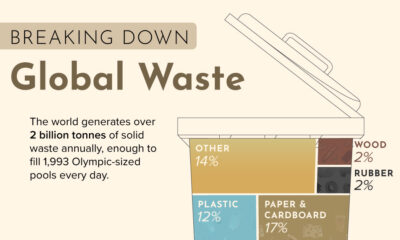
Green4 days ago
A Visual Breakdown of Global Waste by Type
Nearly half of all global waste is from an unexpected source. And despite the headlines they make, it’s not paper or plastic.
-
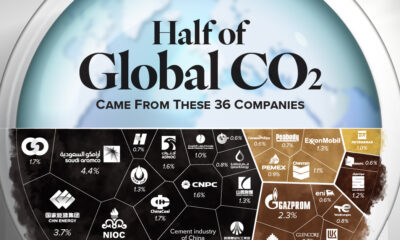
Green1 week ago
Ranked: Companies with the Most Fossil Fuel and Cement CO2 Emissions
Half of the world’s total fossil fuel and cement carbon dioxide emissions in 2023 came from just 36 companies.
-
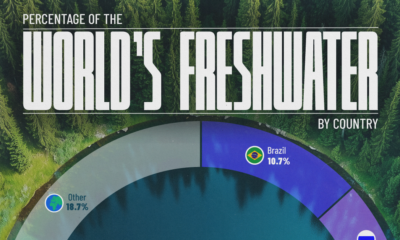
Environment4 weeks ago
Charted: Share of Freshwater Resources by Country
Water is a scarce commodity that is likely to fuel future conflict. View our graphic to see who controls the most freshwater resources.
-
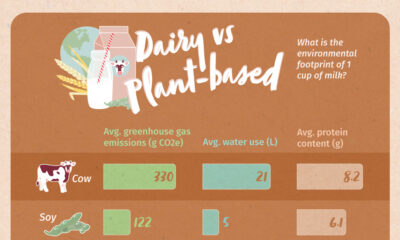
Green4 weeks ago
Dairy vs. Plant-Based Milk: Which is Greener?
Dairy milk has a larger environmental footprint compared to plant-based alternatives.
-
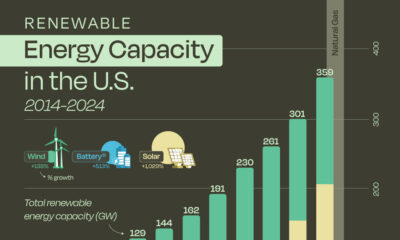
Green4 weeks ago
Charted: Renewable Energy Capacity in the U.S. (2014-2024)
Discover how renewable energy capacity in the U.S. has grown over the past decade, with solar PV leading the charge.
-
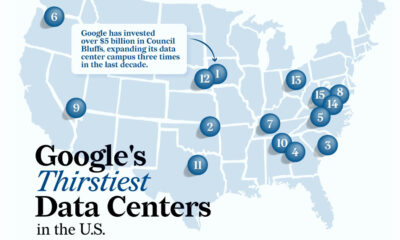
Maps2 months ago
Ranked: Google’s Thirstiest Data Centers
Locating and ranking the thirstiest of Google’s data centers in America, by the millions of gallons of water consumed in 2023.
Subscribe
Please enable JavaScript in your browser to complete this form.Join the 375,000+ subscribers who receive our daily email *Sign Up